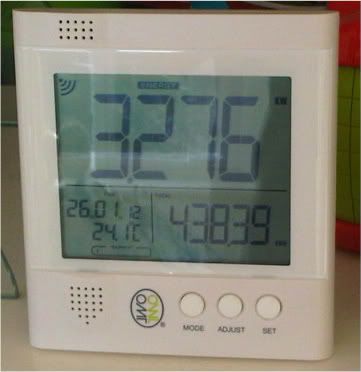Courtesy of statistics published on the met office website, I've downloaded the observational data from London Heathrow, which is not too far from me, for the analysis. This contains various data, by month for the last 50 years or so, most importantly this includes the number of hours of sun per month.
The first chart, shows the hours of sun reported, based upon the monthly records going back to 1957, with the mean, max and min shown as the lines. I've then superimposed the 2012 actual figures (diamond markers) on the chart.
The overall shape of this chart is no real surprise and looks familiar to the shape of the PV predictions, however the variations are quite interesting. Indeed in a good month it is possible to have 50% more sun than average, and in a bad month 50% less.
2012, as anyone who has been watching the weather will tell you, has been another strange year. March was unusually warm and sunny for the last few weeks, after which the weather took a distinct downturn, and it was only August and September that provided any semblance of Summer. June in particular is worthy of note - the least sunny June for over 50 years. No wonder my chilli plants didn't do well in 2012.
Which brings me on to the real point of the analysis - does the PV system performance vary with the relative hours of sunshine? Intuitively this is obvious, but it's always good to run the analysis properly. So let's look at the results (chart below).
Here we see each month (plotted as a diamond) comparing the monthly sun hours normalized against the seasonal norm, plotted against the PV system output (indexed against the PV output prediction), with a simple linear fit applied. Visually this appears to be a good correlation (r=0.957), although there is a little noise. This is not surprising - not all of the sun would hit the panels at a good angle, (if it's at the wrong time of the day) and not all of the sun would be at the same strength, but overall, this would appear to be a good fit. More sun = more PV ouput, is hardly surprising but it does seem to suggest a linear relationship.
A quick t-test on the above data provides a value of p=0.00209 which suggests a fairly high degree of significance, it'll be interesting to revisit this in a year or so's time to see how the correlation and p-values develop, especially as the system starts to degrade.
One important observation on the above is there is a natural bias in the system performance - whenever the sun hours were on the seasonal norm (i.e. 100% on the X-axis), the PV system appears to be producing 120% of predicted output. This is good news from a generation and FIT payment point of view and back up the anecdotal views of the PV system installer. They stated that PV systems seem to out-perform the prediction, so hopefully as the system degrades, I will still see a good rate of output and system return. One lives in hope.


